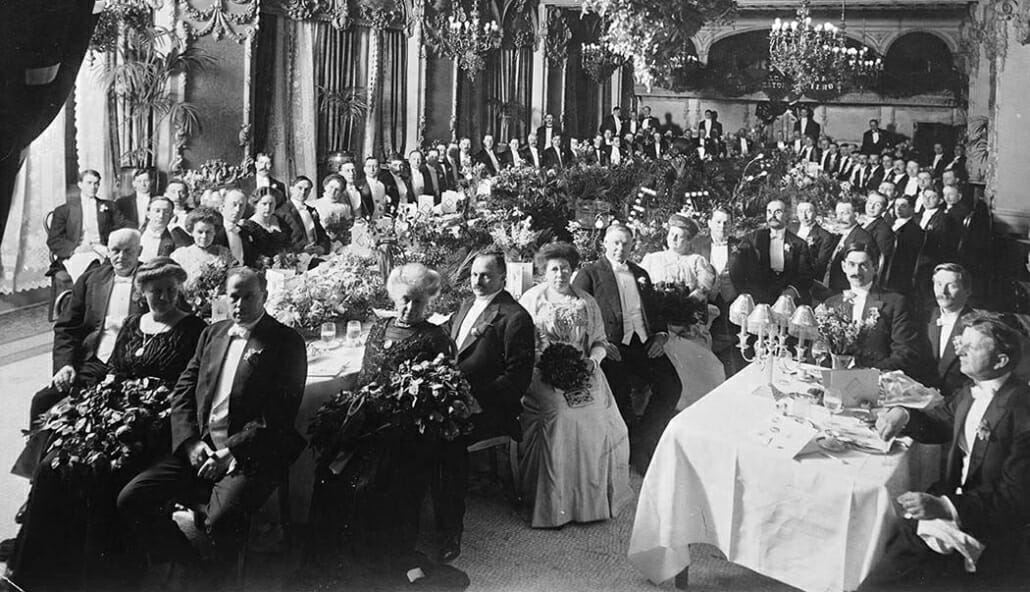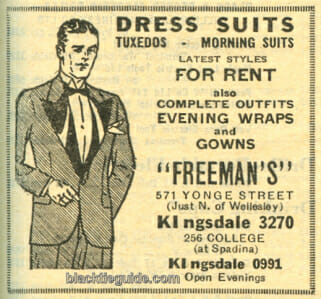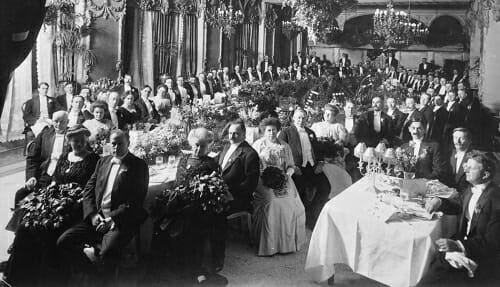The historical paucity of genuine Canadian etiquette guides originally led me to wonder how much my ancestors’ sense of propriety was affected by our culture’s most predominant influences: our British founders and our American neighbors.
If the content of the Toronto Reference Library’s collections is any indication, U.S. publications were clearly the preferred choice whether as direct imports or as Canadian editions (the latter differing only in their advertising content). However, the preface to a rare bona fide native publication, 1932’s Etiquette in Canada, suggests otherwise:

The books [on etiquette] which have been available are not entirely suitable because they are by American writers. While American etiquette is of course founded on certain basic rules of good-breeding, it differs in many instances from social usage in Canada – this country leans more to English ways. As Basil King remarked: Canada is conservative and follows the British traditions, while the United States initiates and creates its own precedents. But, it may be asked, if American authorities do not entirely meet our need, why not use English works on etiquette? To this, the answer is that they are much too general in treatment. They entirely ignore many of the small details that are often more puzzling than the large, important ones, because they presume that such knowledge is already possessed by the reader.
A later chapter points out one very notable exception to the preference for English tradition: “There is a rather striking difference between a wedding that takes place in England and one celebrated in Canada, for to a large extent the custom prevailing in the United States has been adopted here.”
Interestingly, the preface also explains that movies (presumably American) were another negative influence on correct behavior: “The rules that people of good breeding observe in their social contacts go by the board in the motion pictures, under the exigencies of the camera. Yet undoubtedly many of the six million Canadians who each week witness such pictures must have their ideas of society rather distorted by them.”

On a related note, the terminology employed by Canadians of the past seems to reflect American usage in that menswear retailers preferred “tuxedo” while etiquette authorities leaned towards “dinner jacket”.

It is, of course, one of the problems with any etiquette or style guides that it reflects the world as the author thinks it ought to be (sometimes with their own slightly idiosyncratic views on things) rather than how they really are. Future historians of clothing and culture would find many current publications equally poor guides to what general custom and useage means is the typical way things are done.
Very good point, Hal!